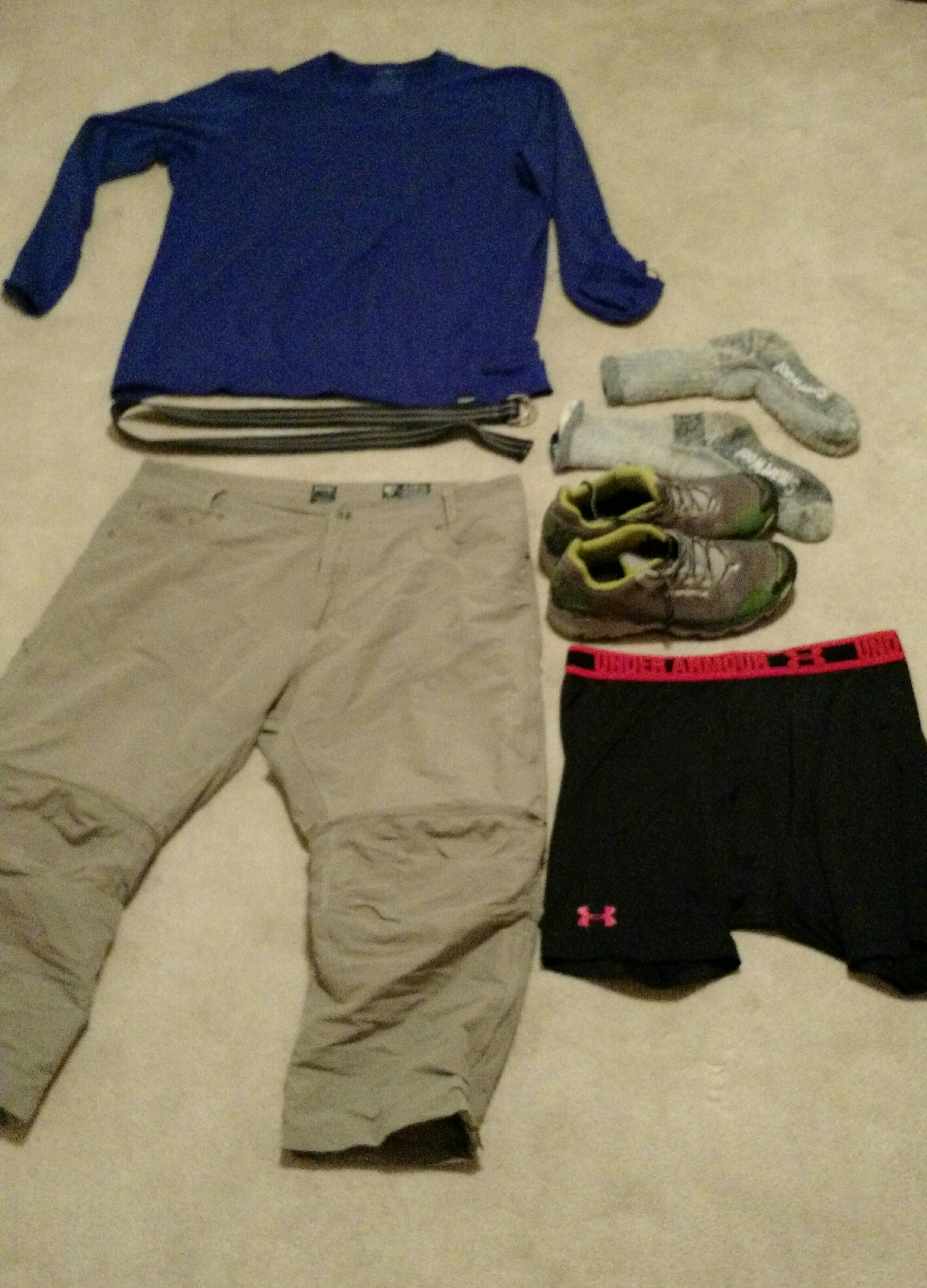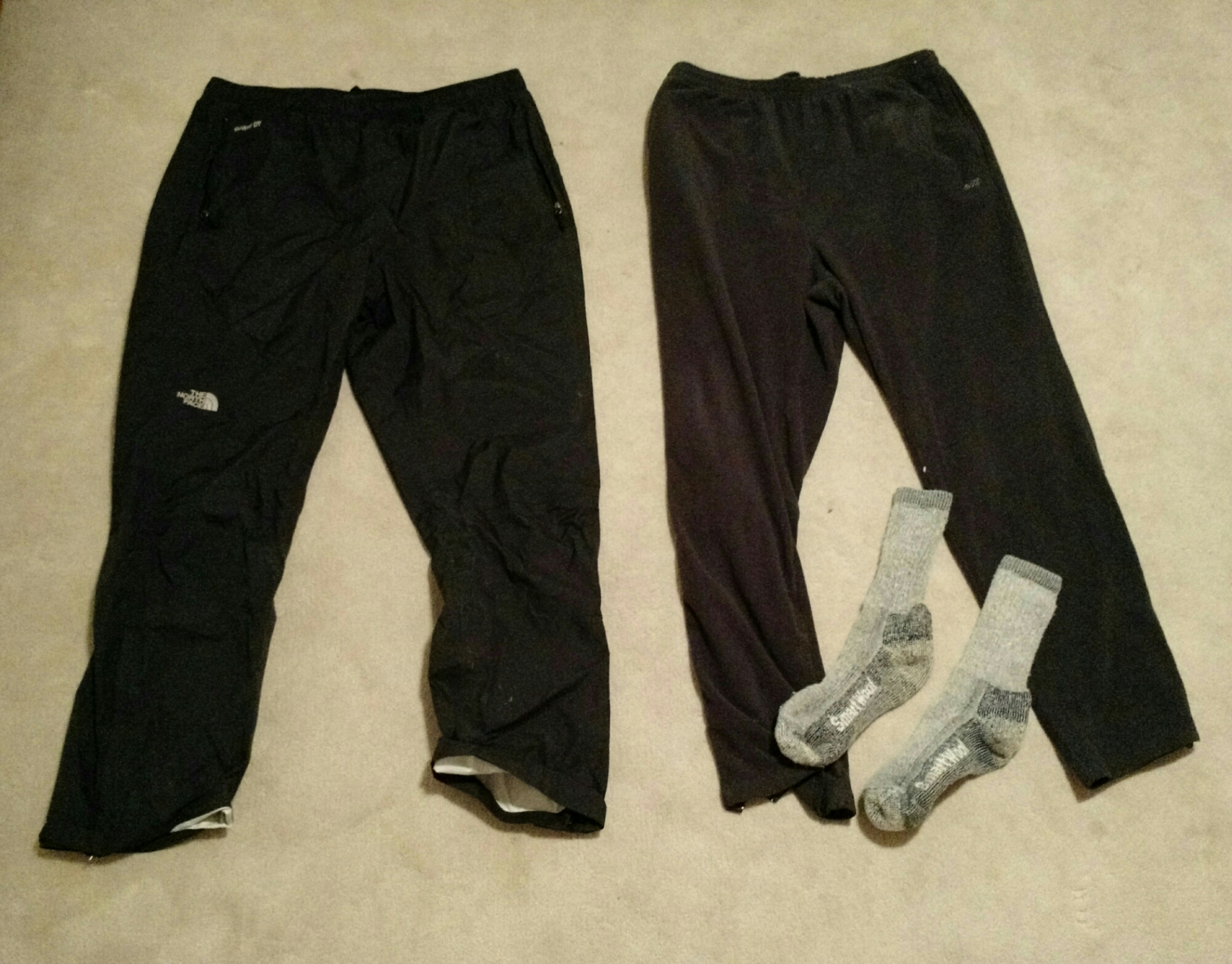Clothing is the first line of defense against the elements. Especially at the start of my hike, it’s main job is to keep me warm. Here’s a quick walkthrough of what I’ll be wearing.

My standard hiking shirt will be merino wool. It’s a quick drying fabric that breathes very well and provides basic warmth even when wet. It’s also less odorous than polyester, but is otherwise very comparable.
For bottoms I’ll have quick drying convertible pants. These can easily zip off the bottom pant legs to be shorts when it gets warm. I’ll also have a simple belt to keep it all up.
Underneath that I’ll be wearing Under Armor underwear. It’s important to have breathable material that wicks away any sweat.
For footwear I’m taking thick cushion merino wool socks and trail running shoes. Trail runners are much lighter than boots and help crank out more miles per day. Some hikers worry about ankle support, but mine are pretty solid. Many long distance hikers take or switch to trail runners. I hope to get 400-500 miles per pair before they need replaced. I’m experimenting with the insoles. I am taking some Orange SuperFeet and also some modifications to the stock insoles that I’ll be switching between them for the best feel. More on that after I have some miles done.

For warmth I’ll be taking my fleece jacket. Fleece is a bit heavier than down per warmth, but stays warmer when wet than down does. Since the east gets so much precipitation there will be a fair amount of time the extra wet warmth will be appreciated.
My hard shell top will help keep me dry and block the wind. It’s key in really cold weather to keep the wind from taking away all my heat. When used together with the fleece jacket it can keep me warm well below 0F.
I’ll also have long underwear bottoms to add some insulation on my legs beyond my convertible pants. I went with a heavy weight (Capilene 4) polyester.
Keeping my head and hands warm are a lightweight bamboo fleece balaclava and fleece headband and polyester blend gloves. The biggest key is just minimizing any exposed skin.

For cold and rainy days I’ll put on my hardshell bottoms. It will be one extra layer, just for the coldest weather. I’ll probably send these home when it warms up enough that I won’t need to worry about getting too cold.
For sleep wear, I’m taking an extra pair of merino wool socks and some cheap fleece pants. These will only be for sleeping so I’ll always have something warm and dry at night.
Summary:
Patagonia Men’s Merino 3 Midweight Crew XXL
Eastern Mountain Sports Web Belt
Kuhl Liberator zip-off pants 40×30
SmartWool Trekking Heavy Crew Socks (2 pair)
La Sportiva Wildcat Trail-Runners EUR 46 US 12.5
Superfeet Orange Insole size F
Under Armour HeatGear Sonic Compression Running Shorts XXL
Patagonia Full Zip Better Sweater XXL
Patagonia Capilene 4 Expedition Weight Bottoms XXL
Marmot Jacket (unknown model, most like the MarmotTamarack)
Turtle Fur Lightweight Bamboo Fleece Balaclava
DeFeet Duraglove ET Black Cordura L
Turtle Fur Fleece Heavyweight Headband
North Face Men’s Venture 1/2 Zip Pants
Cheap fleece bottoms, Off-brand